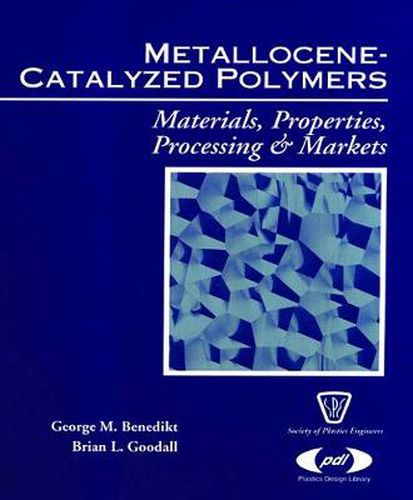Readings Newsletter
Become a Readings Member to make your shopping experience even easier.
Sign in or sign up for free!
You’re not far away from qualifying for FREE standard shipping within Australia
You’ve qualified for FREE standard shipping within Australia
The cart is loading…






Norwich, NY - There is a revolution underway in making plastics with metallocene catalysts. Hundreds of millions of pounds of these plastics are now sold annually and many of the products, which are currently produced from other polymers, could soon be converted to metallocene-catalyzed polymers. These new technologies will impact the additives used to stabilize, modify and process these polymers. It has been estimated that within 10 years, over 50 per cent of all polyolefins will be made by using metallocene catalysts creating a new and dynamic environment for resin producers, additive suppliers, compounders, molders and end users. Metallocene - Catalyzed Polymers - Materials, Properties, Processing And Markets brings together for the first time the work of dozens of world renowned experts on the subject. All the content was presented at various Society of Plastics Engineers (SPE) conferences and has been peer reviewed by experts. You’ll learn about the metallocene revolution and how producers are creating thermoplastics with superior, well-defined properties and which markets present the greatest potential. ‘If you are involved with the development, use, production, marketing or testing of polyolefins, styrenics, ethylene-olefin, ethylene-propylene-diene (EPDM) and nonbornene, you need this book’ George Wypich BF Goodrich. Metallocene-Catalyzed Polymers - Materials, Properties, Processing And Markets is a multidisciplinary review of the important aspects of metallocene chemistry containing over 50 chapters divided into four sections. The section on materials contains chapters on polyethylene, polypropylene, polystyrene, ethylene-olefin, ethylene-propylene-diene (EPDM), and nonbornene copolymers and pinpoints the differences in the properties of materials synthesized with metallocenes and those created using traditional methods. The sections on properties and processing discuss the special attributes, which must be considered when using metallocene-catalyzed polymers and illustrate the reasons why this new technology will have such a broad impact on the industry. The marketing section provides an overview of the potential this new technology presents.
$9.00 standard shipping within Australia
FREE standard shipping within Australia for orders over $100.00
Express & International shipping calculated at checkout
Norwich, NY - There is a revolution underway in making plastics with metallocene catalysts. Hundreds of millions of pounds of these plastics are now sold annually and many of the products, which are currently produced from other polymers, could soon be converted to metallocene-catalyzed polymers. These new technologies will impact the additives used to stabilize, modify and process these polymers. It has been estimated that within 10 years, over 50 per cent of all polyolefins will be made by using metallocene catalysts creating a new and dynamic environment for resin producers, additive suppliers, compounders, molders and end users. Metallocene - Catalyzed Polymers - Materials, Properties, Processing And Markets brings together for the first time the work of dozens of world renowned experts on the subject. All the content was presented at various Society of Plastics Engineers (SPE) conferences and has been peer reviewed by experts. You’ll learn about the metallocene revolution and how producers are creating thermoplastics with superior, well-defined properties and which markets present the greatest potential. ‘If you are involved with the development, use, production, marketing or testing of polyolefins, styrenics, ethylene-olefin, ethylene-propylene-diene (EPDM) and nonbornene, you need this book’ George Wypich BF Goodrich. Metallocene-Catalyzed Polymers - Materials, Properties, Processing And Markets is a multidisciplinary review of the important aspects of metallocene chemistry containing over 50 chapters divided into four sections. The section on materials contains chapters on polyethylene, polypropylene, polystyrene, ethylene-olefin, ethylene-propylene-diene (EPDM), and nonbornene copolymers and pinpoints the differences in the properties of materials synthesized with metallocenes and those created using traditional methods. The sections on properties and processing discuss the special attributes, which must be considered when using metallocene-catalyzed polymers and illustrate the reasons why this new technology will have such a broad impact on the industry. The marketing section provides an overview of the potential this new technology presents.